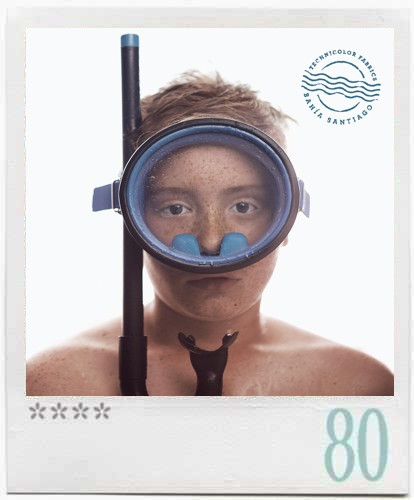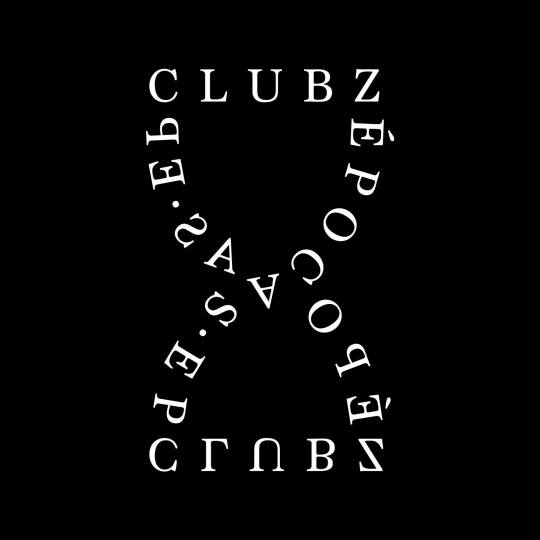 Bahía Santiago, Technicolor Fabrics
Bahía Santiago, Technicolor FabricsLOV/RECS, Mexico
Rating: 80
by Souad Martin-Saoudi
I will sound like a pop psych/self-help preacher, but I believe we all have, within us, a child (I can feel the mass eye-roll as I’m writing this). Yet, more often than not, the adults that we are abandon or silence that child (I’m referring to you, eye-rollers). This repression inevitably crushes our spontaneity, creativity, authenticity, even our ability to express ourselves, have self-esteem and be natural. Under this context, to recognize and unleash our inner child, as a carrier of transformation, is to recognize and unleash our inner essence, our creative potential and spontaneity; it is to identify all the fragmented parts of our psyche and ultimately find our true self. This is a lengthy process; but it is one that pushes us to become complete. Bahía Santiago, title chosen by Technicolor Fabric for their latest album, is the imaginary cove where this inward odyssey begins; it’s where we (re)connect with the one we were before becoming apathetic, “normal” adults.
Over the course of two years, Technicolor Fabrics tactfully crafted nine songs like nine viewpoints overlooking the various facet of their concerted voyage within. This collection of songs is actually the band’s third album, but where Run… The sun is burning all your hopes (2008) and Ideas (2011) seemed like indecisive attempts at anchoring their particular brand of indie pop rock, Bahía Santiago is all about refinement and definiteness, whether it is in Juan Pablo Corcuera’s startlingly melancholic tone and rock accent, in Abraham López’s dextrous percussive punches, Daniel Salazar’ immaculate yet ardent synth progressions, Joaquín Negrete’s sleek and elastic bass lines or in "Yogui" Raúl Cabrera’s smooth and earnest guitar riffs. Bahía Santiago is their most ambitious and probably their most complete and accomplished album.
The first drum stroke and guitarrazo of opener “Aviéntame” immediately signals a course-alteration for the quintet who recently moved from Guadalajara to D.F. The vigorous distortion-fuelled track sounds nothing like the others on the album (and is the only one produced by Milo Froideval). Yet, it acts like the essential phase to undertake a fundamental re-think of the past and present – the journey to Bahía Santiago. “Mi templo es frágil yo me pierdo. Me fundo y viajo por el mar abierto, muy lento” sings Corcuera with the hint of a smile. You know the band just dived straight into a vault of anxiety and despair induced by the contemporary urban condition only to emerge at the other end, a little lighter. “Volver a Comenzar” naturally follows, accompanied by a fluid synth line and layered "oh, oh, ohs." It’s the embodiment of an existential reality: unconditional acceptance of the loved one is an illusion; it’s sad, disturbing, yet reassuring. The dominant bass, organ-shuffle and solid backbeat on “Ceniza” presages we are finally reaching the shores of Bahía Santiago. Here, Corcuera shows some creative wisdom recognizing that we are at the end of the day, all insignificant, like ashes at sea (“La verdad siempre cambia de lugar, si no sabes dónde va, se va, se va. Dime si tú también lo ves así, soy ceniza nada más”). “Fuma” is a synth-triggered marimba gem. The song, which features the new wave-esque inflections of Siddhartha (I hear some Cerati!), reveals how hooky Technicolor Fabrics can be with their minimalist approach. The spirit of the singer-songwriter, who produced all but two songs on the album, can be glimpsed all through this journey dedicated to nostalgia, innocence and beauty.
Layered percussion, clean organ patterns, and precise guitar lines bounce around and off of one another on obvious standout track “Globos.” While the title inevitably leads me back to the compelling images of Albert Lamorisse’s oscar winning medium-length film, the lyrics emits the desire to recover one’s ability to risk without fear and renew with the innocence of simplicity. On wordless “Venezuela,” the earthy summer breeze of Bahía Santiago wafts our faculty for awe, wonder and naïveté but also holds our accumulated traumas, fears and hurts. The Tapatío boys have sonically evolved in a sort of horizontal organization where every member is visible, and the 2 minutes instrumental piece demonstrates their fully grown ability for decentralized arrangements. “Desde el Mar,” with its wailing guitars and ethereal synth lines, give out rock poem vibes. The sonic collage continue to expand on “Solo,” as the band seem to have channelled Sebastien Tellier’s erotic pop feel just seconds into it. “Hoy,” one of the most accomplished tracks on the album, sounds both borrowed and fresh. The album closer “Química,” which features the members of Baltazar (Corcuera’s other band), releases something somewhat fascinating. With its singular sound aesthetics (a combination of pop traditions, mysticism and modernism), the rock hymn makes for an interesting finale.
From a first listen, the panorama presented by the style-hopping pop band might just seem like a flaunting of their musical pedigree. Yet, the feel quickly dissipate as it becomes clear the various genre incursions are all put to the service of the songs. More striking, however, is the consistency of the journey; the sequence of the pieces on Bahía Santiago is smooth and everything flows perfectly. Still it’s an album of beginnings of songs, not of apotheoses or grand finales. The best tracks reveal themselves in their first minute, which alone is enough to conquer.


